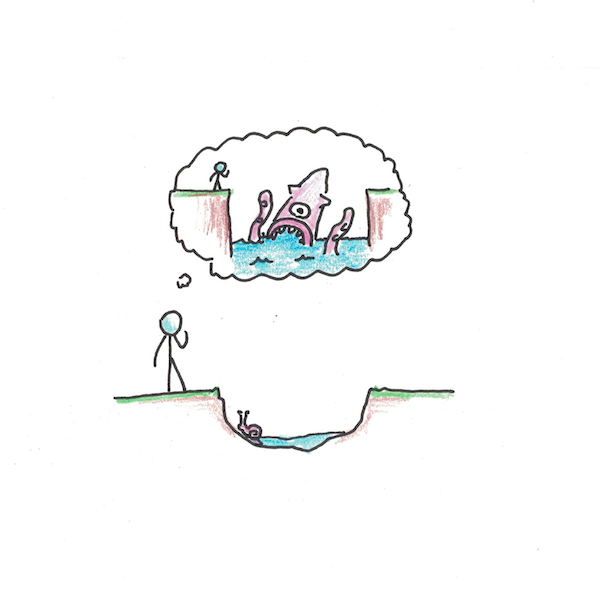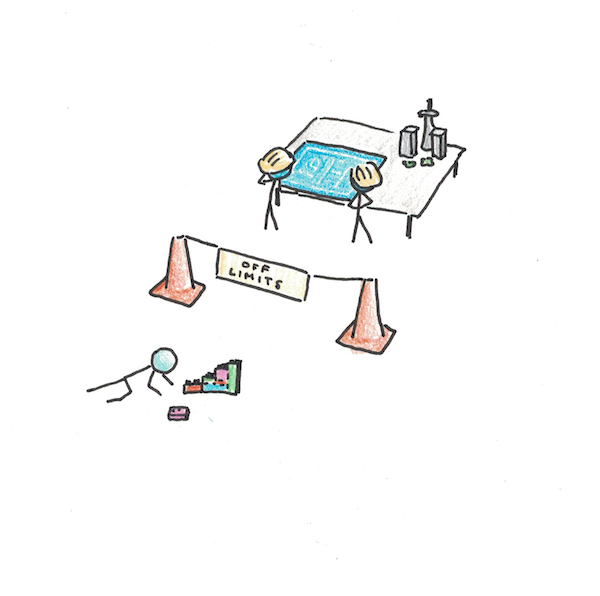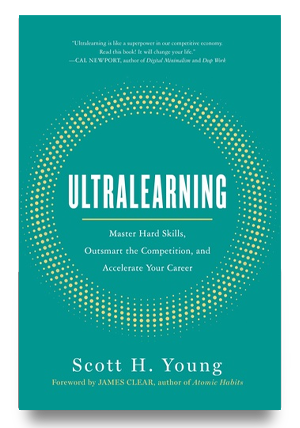Previously, I wrote about the importance of doing the real thing. Skills are narrow. Transfer is hard. Fake substitutes work less than you think.
Yet getting stuck on the fake stuff is easy. The writer who doesn’t publish anything. The artist who buys paint but struggles to put it on canvas. The entrepreneur that spends more time on business cards than getting clients.
I say this not to scold, but to remind myself. I trick myself into fake efforts more than most. Cleverness can be an enemy, as it enables elaborate justifications for why you don’t need to do the real thing.
With this in mind, I’d like to turn to some of the obstacles to the real thing. Why do we get stuck on fake stuff? What can we do to focus in on what actually matters?

Are Your Barriers Inside or Out?
There’s two flavors of obstacles you might face: inner and outer.
Outer obstacles are the ones we expect. You can’t do real work because nobody will give you a real job. You’re learning French, but the trip to Paris got cancelled. The playing field is out of bounds.
In these cases, substitutes are necessary, but they should approximate your target as closely as possible. French from a tutor on Skype isn’t exactly the same as living in France, but it’s directionally correct. You’ll just have to fill the gaps when the real situation arrives.
Designing practice efforts to faithfully train real skills can be tricky. Asking a few questions can help:
- What knowledge would I need for the real situation? A French conversation over Zoom won’t include how to order a pain au chocolat by default. Anticipating what you’ll need to know can help you integrate it into your practice.
- Are components of the skill removed during practice? Learning salsa dancing in classes, where both partners know the same steps, may not transfer well to social dancing where one person is expected to take the lead. What’s missing here is a skill: using your body to show what comes next. Skill gaps can be problematic because they may reduce your effective ability to zero in the real environment.
- Will you be able to recognize when to apply abstract ideas? Reading a business book is only helpful if you spot where its advice applies. This is a major challenge of academic classes, where transfer often fails not because students don’t learn the material but because they can’t connect it with a new context.
Despite this difficulties, I’m less concerned about this kind of obstacle. Yes, it can be embarrassing to realize you don’t know how to dance well your first time, or you can’t paint a picture without someone else showing you the steps, but those aren’t insurmountable obstacles. They’re just a bit of extra work to fill in the gaps.

Inner obstacles are the dangerous ones. These occur not when real practice is impossible, but when you avoid doing it. Unlike barriers in the outside world, they often result not in imperfect practice, but no work at all.
Inner Obstacles to the Real Thing
The academic who spends more time on Twitter than writing papers has an inner obstacle. Of course she could work on her research, she just avoids it.
Sometimes this avoidance is obvious and we simply call it procrastination. While procrastination is a major problem, enough ink has been spilled about it that I don’t think it needs further discussion.
What’s dangerous about inner obstacles is that we often seek to justify them. You’re not doing practice tests because you’re not ready—best to look over your notes a few times first. You’re not signing up customers because the product needs to be perfect first.

The danger is especially acute because sometimes the excuse is valid. Many skills are too big to be learned in one go, so they need to be broken down and built up. Nobody learned quantum mechanics without first mastering algebra. To get the real job you need to be qualified first. Diving in only makes sense if your skills were nearly there already.
Of course, if there were no mental barriers, such problems are mere planning. The person who loves math doesn’t mind drilling algebra and calculus before moving to differential equations. The person who loves art, doesn’t mind doing tonal studies before adding color.
The problem is that the preliminary step gets turned into a permanent substitute. What started as watching a few tutorials to get some tips, turns into an obstacle for actually getting started. The line between help and hindrance is blurry, but you’ll know when you’ve crossed it.
Overcoming Inner Obstacles
Getting over your inner obstacles has a few steps:
- Recognize when you’ve fallen from the path. Ask what the best way to make progress would be, if fear and frustration were no obstacle. Then compare that to what you’re actually doing. You can’t overcome an obstacle if you don’t notice it blocking your path.
- Reduce friction for the real thing. Set up your working space. Block off time in your calendar. Give yourself permission to fail at first. The real thing is necessary, but there are many ways to make it easier to attack.
- Point out what are actually distractions. Fake efforts become insidious when they feel like progress. When you’re using them to avoid doing the actual work, call them what they are—distractions.
The biggest obstacle is self-deception. An obstacle that could be overcome is rationalized as just being part of the path. There’s no surefire way to dispel these illusions. Is it preparation or procrastination? If the answer was obvious, self-deception wouldn’t be common.
I think if you can become more sensitive to spotting these traps, you’ll fall into them less often. “Am I doing the real thing?” ought to be asked each time you get to work. If the answer is no, you need to proceed with caution.


 I'm a Wall Street Journal bestselling author, podcast host, computer programmer and an avid reader. Since 2006, I've published weekly essays on this website to help people like you learn and think better. My work has been featured in The New York Times, BBC, TEDx, Pocket, Business Insider and more. I don't promise I have all the answers, just a place to start.
I'm a Wall Street Journal bestselling author, podcast host, computer programmer and an avid reader. Since 2006, I've published weekly essays on this website to help people like you learn and think better. My work has been featured in The New York Times, BBC, TEDx, Pocket, Business Insider and more. I don't promise I have all the answers, just a place to start.